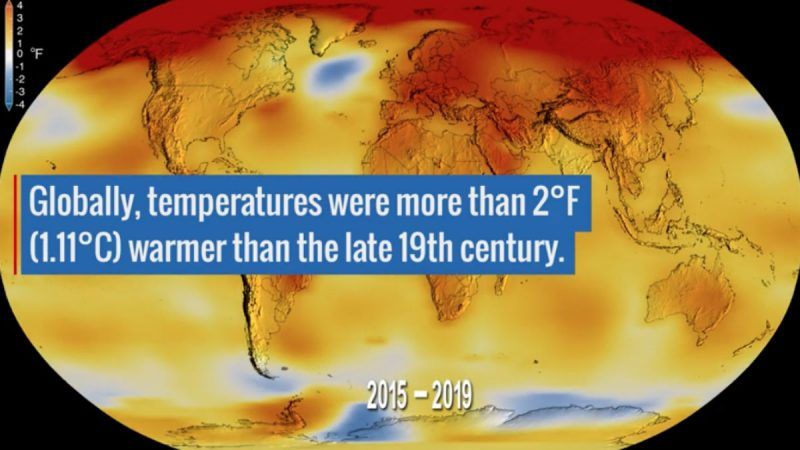2019 Was Second Warmest Year on Record Says NOAA
The past five years have been the warmest of the last 140 years.

The Earth's global surface temperatures in 2019 were the second warmest since modern record-keeping began in 1880, according to the National Oceanic and Atmospheric Administration (NOAA). Globally, 2019 temperatures were second only to those of 2016. In 2019, global average temperatures were 1.8 degrees Fahrenheit (0.98 degrees Celsius) warmer than the 1951 to 1980 mean. The past five years have been the warmest of the last 140 years.

Europe's Copernicus Climate Change Service also reports that 2019 is the second hottest year in its records. The Copernicus researchers further agree that last years have been five warmest years on record and that 2010 to 2019 was the warmest decade on record. Overall, 2019 was almost 0.6 °C warmer than the 1981-2010 average and the globe's average temperature of the last five years was between 1.1 and 1.2 °C higher than the pre-industrial level.
University of Alabama in Huntsville researchers John Christy and Roy Spencer who track global temperatures using satellite data basically concur. Their latest report notes that "for the calendar year as a whole, 2019 was quite warm at +0.44 °C (+0.79 °F), slightly below the second-place year of 1998 (+0.48 °C) and below the warmest year of 2016 (+0.53 °C). Since 1998 and 2019 are separated by only +0.04 °C, it could be argued that they actually tied for second place."
Some folks who remain skeptical of man-made global warming point out that the high average global temperatures for both 1998 and 2016 were boosted by big El Ninos, a phenomenon that periodically warms the waters off the western coast of South America.
This observation doesn't, however, offer much comfort. As I reported in my long analysis, "What Climate Science Tells Us About Temperature Trends," back in November, a 2019 International Journal of Climatology article by a team of Chinese atmospheric scientists looked at how the long-term global warming trend affected both the 1998 and 2015/2016 super El Ninos. They calculated that the 1998 El Nino event added +0.18 C to the long-term global warming trend whereas, in 2016, that El Nino event added just +0.06 C to the long-term warming trend. In other words, it took a lot less heat to boost the 2015/2016 El Nino to slightly above the level of the 1998 El Nino. They concluded that this "implies that warmer years like 2014-2016 may occur more frequently in the near future."
In other words, natural variations like El Nino oscillations will be play ever smaller roles as global average temperatures continue to rise due to increasing concentrations of greenhouse gases in the atmosphere.


Show Comments (176)